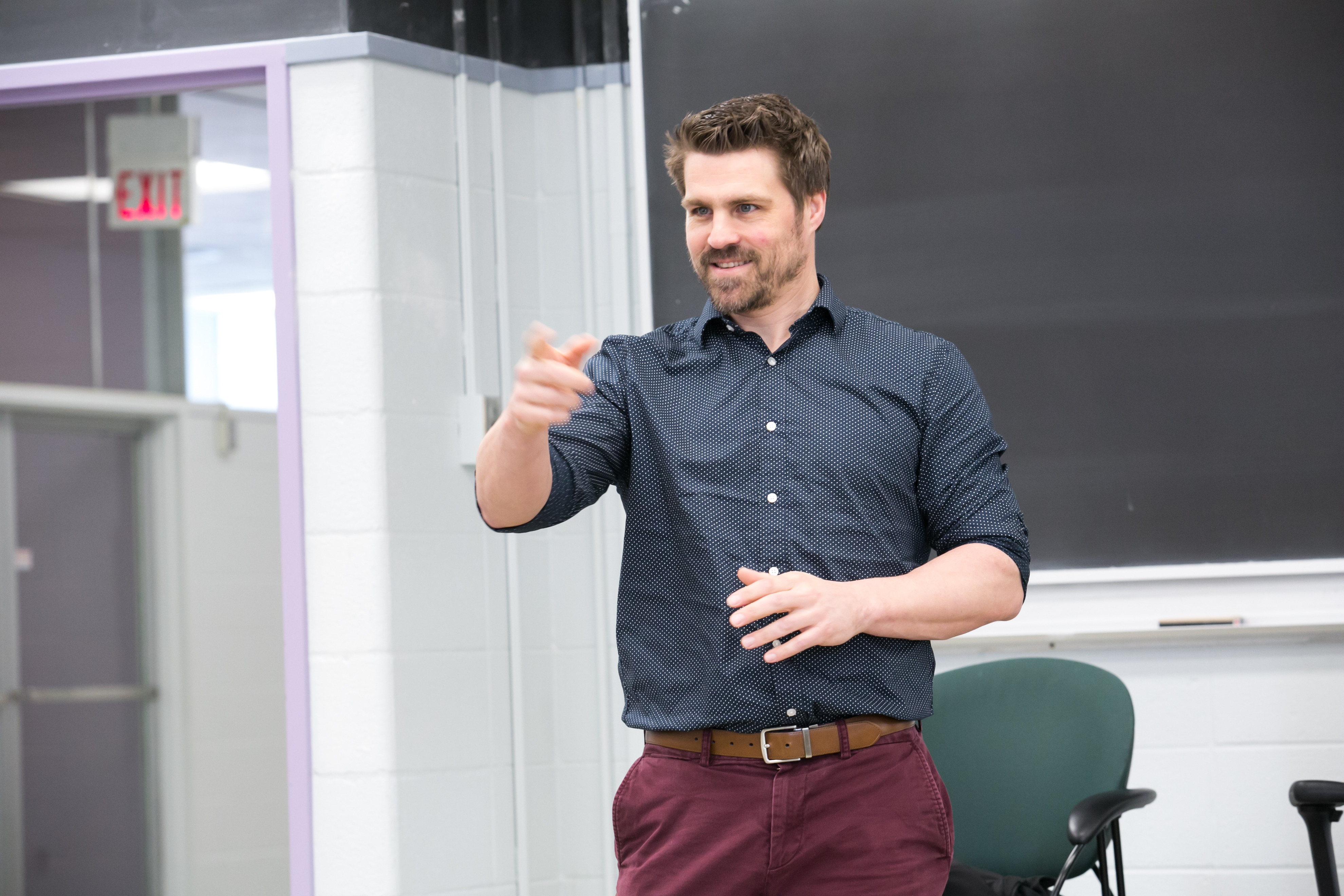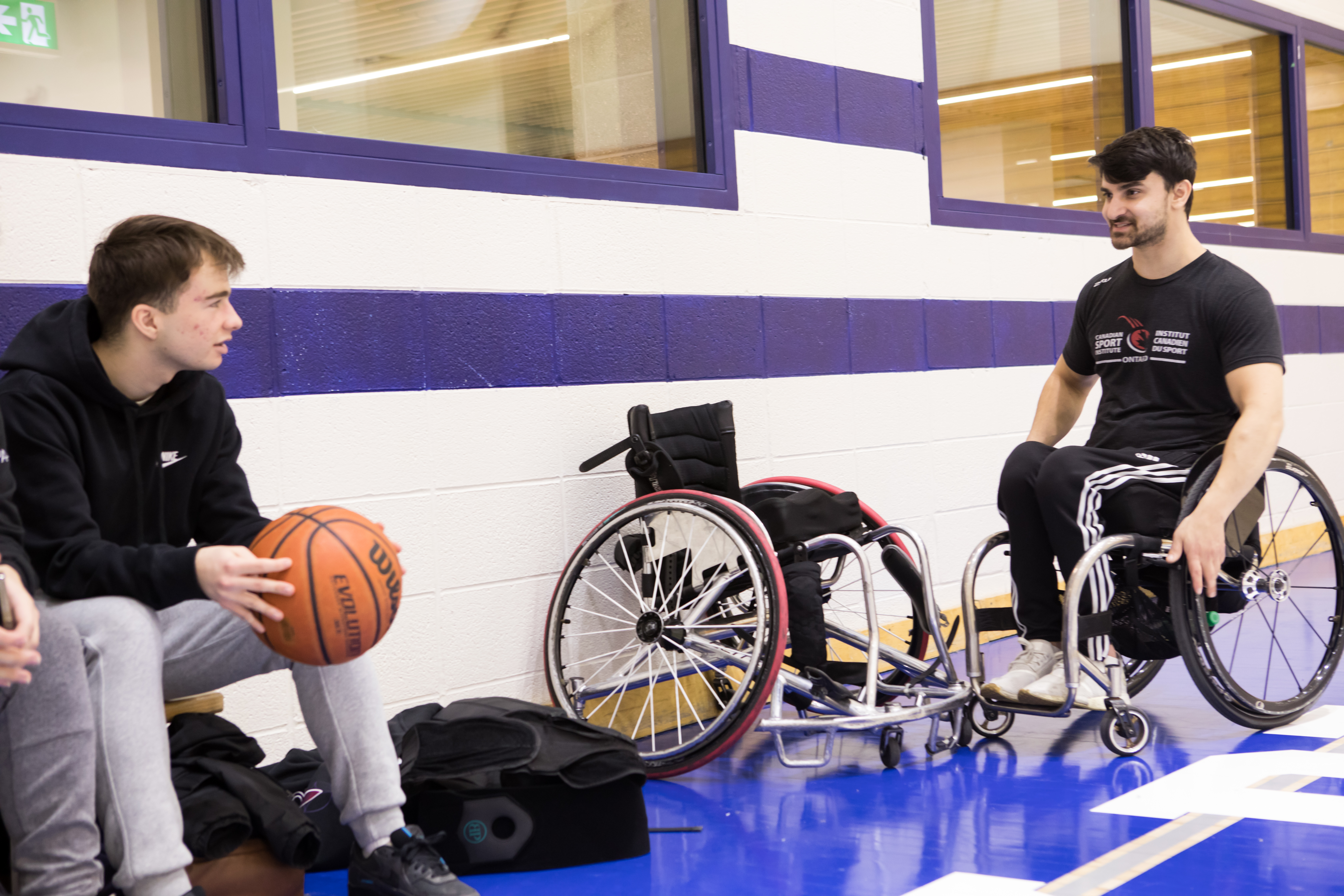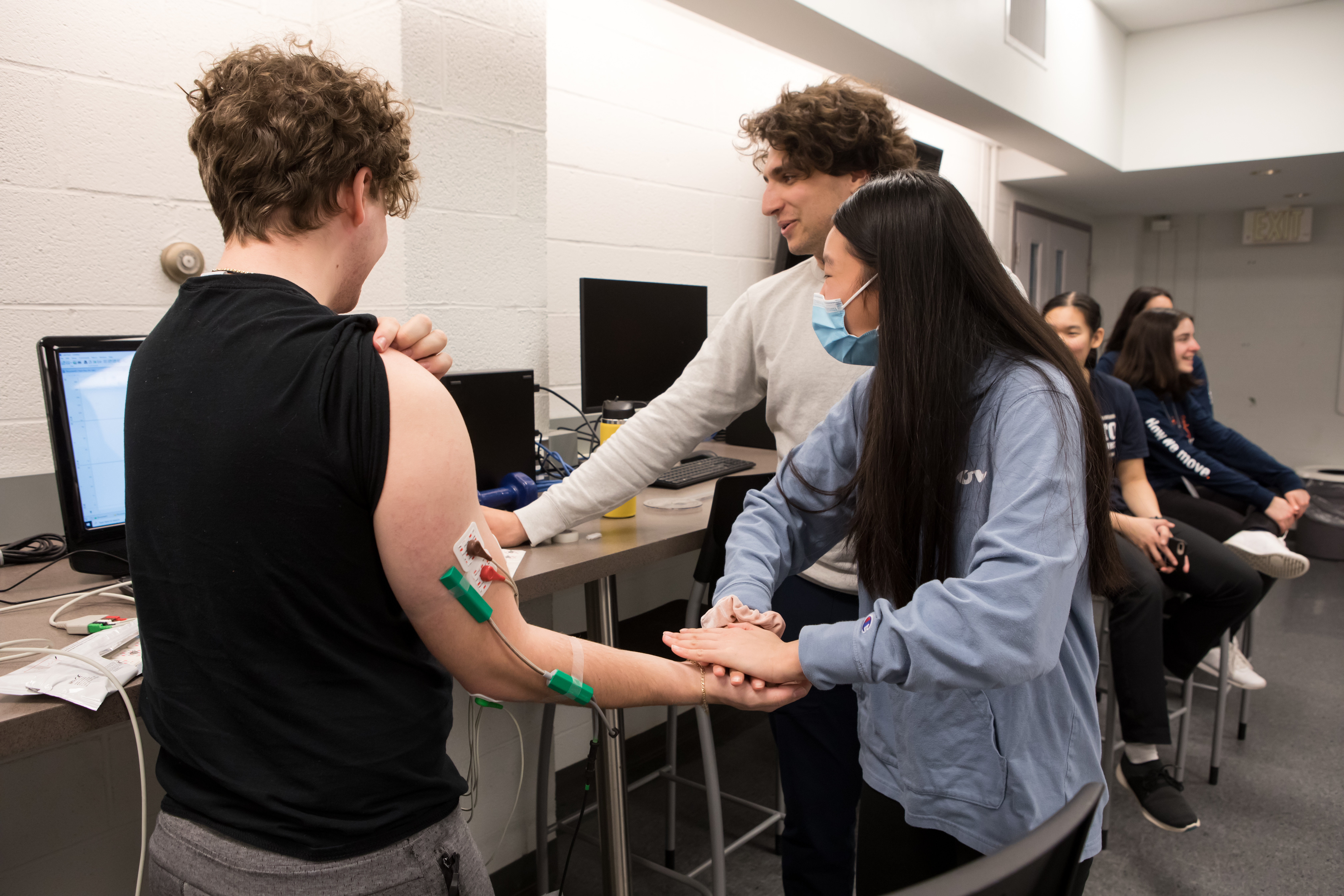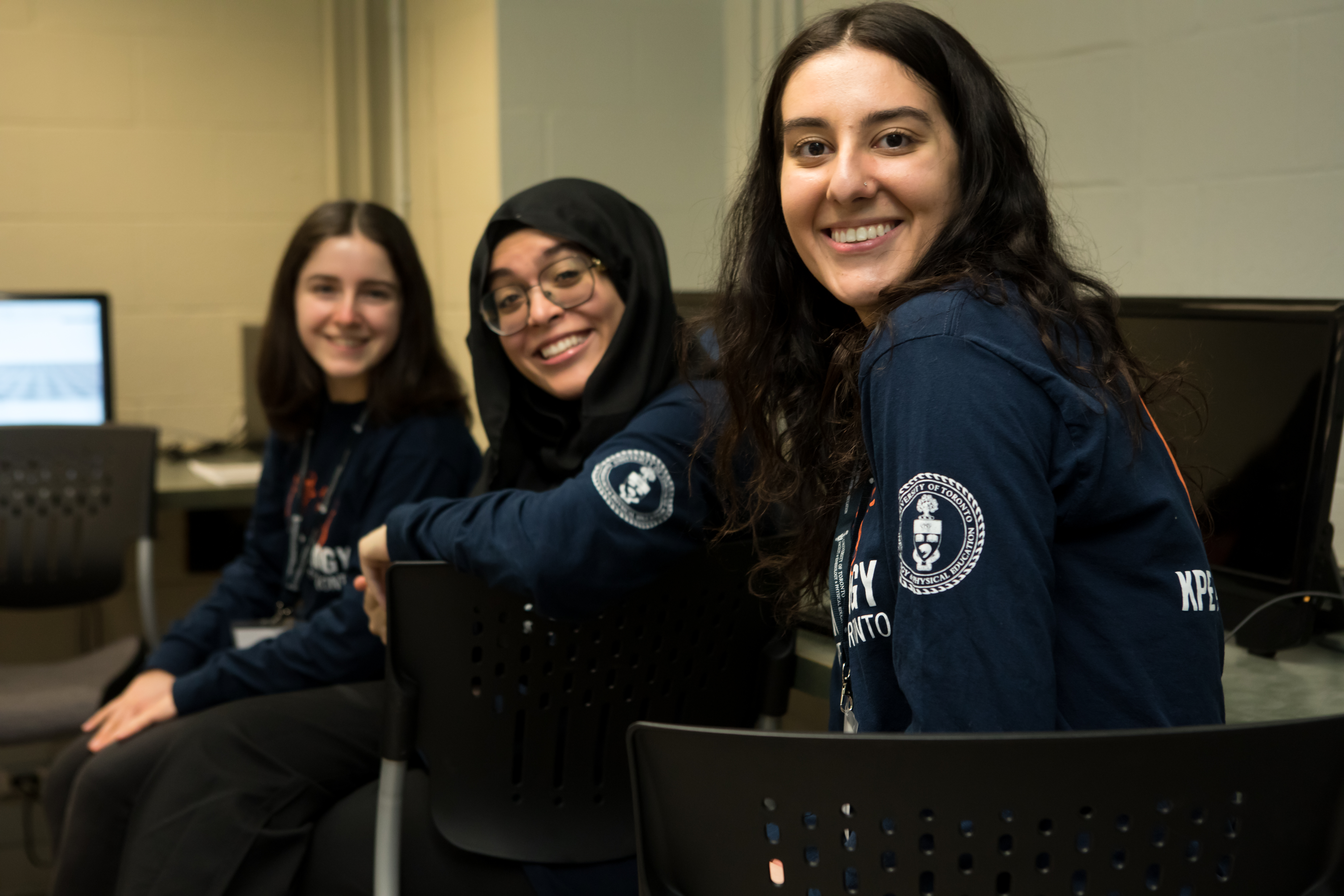The University of Toronto Faculty of Kinesiology and Physical Education (KPE) recently celebrated National Biomechanics Day by welcoming 140 students from six high schools from the GTA interested in learning more about the science – and careers - in biomechanics.

KPE Assistant Professor Timothy Burkhart
The National Biomechanics Day was started in 2016 by Paul DeVita, a professor of kinesiology at the East Carolina University and past president of the American society of biomechanics, as a STEM and STEAM outreach activity to excite high school students about “the breakthrough science of the 21st century,” as he coined it. Since then, the event has spread internationally, including Canada.
“When in-person classes resumed, I thought it would be a good idea for myself and my lab to get involved,” says Assistant Professor Timothy Burkhart, who heads the Biomechanics of Orthopaedic Sports Medicine lab at KPE and spearheaded the event at the faculty last year. “The idea is to give students a taste of all of the different things that we do in biomechanics.”
Wheelchair basketball athlete Dani Bigu gave a presentation to the students
Students first met with para-athletes Darek Symonowicz and Dani Bigu, who shared their experiences with parasport and the role biomechanics has had in helping them move efficiently in their sports. Symonowicz is a sitting volleyball athlete, who made the men’s national team in 2012. He also swims, cycles, rock climbs and plays wheelchair basketball. Bigu transitioned from soccer to wheelchair basketball following an accident, earning a spot on Ontario’s team for the 2015 Canada Games.
Following their presentations, the high-schoolers transitioned to labs, facilitated by Burkhart and his graduate students.

PhD student Pratham Singh guides a student wearing a homemade prosthetic across the force field (plate)
Pratham Singh, a PhD student in Burkhart’s lab, who won the disability biomechanics grant this year from the American Society of Biomechanics and National Biomechanics Day organizers, showed students how they can design lower limb prosthetics with items found in their household and then had them use the homemade prosthetics to walk across the force plate that measured how much force they exerted into the ground.
“It gives them a good sense of what biomechanics can do,” says Singh. “They get to play around with the different tools of biomechanics, but also experience what it’s like to have to learn to use a prosthetic for the first time.”
PhD student Margaret Harrington showed students how they can use computer models to measure muscle forces and Burkhart demonstrated the use of electromyography (EMG) to measure how much electrical activity the muscles produce.

Students using electromyography (EMG) to measure the electrical activity of their muscles
“Biomechanics looks into the relationship between physics and biology,” says Burkhart. “We want to know what are the forces acting on the body to make it move and then what are the forces acting on the body when we move?
“Also, what are the forces generated by the body? How do those interact with our surrounding world?”
Burkhart’s lab considers all these questions in order to understand why people get injured. They then use that information to determine how they can develop interventions to reduce the risk of someone getting injured. But, there’s more to it.
“We also look at how can we use biomechanics to improve treatment after injuries, from non-surgical treatments such as exercise programs all the way to the surgical,” says Burkhart. “We work with orthopedic surgeons to see how we can optimize some of those treatments such as ACL surgeries.”
Finally, they look at rehabilitation. “How can we design better rehab programs, to make sure that we're able to get injured individuals back to their normal activities as fast as possible, as safe as possible?”
In addition to getting high school students excited about biomechanics, the day is an opportunity for graduate students to work on their knowledge translation skills.
KPE student ambassadors were on hand to guide visiting high school students between labs
“It’s a nice opportunity for them to practice teaching and communicating their research in front of a ‘live audience’, which is something you don’t often get to do when you’re in the lab all day long,” says Burkhart.
In addition to Singh and Harrington, master students Anita Borhani, Joshua Taylor and Charles Adeyinka, and third year undergraduate research student Rebecca Chan also got to assist Burkhart with the demonstrations.
Nadia Pescador, a teacher from the Dante Alighieri Academy in the Toronto Catholic District School Board, called it a great opportunity for high school students to explore an area of interest.
“It's a great opportunity for students to really get that hands-on experience … to see the university as a living, breathing space.
They were very excited to be here.”
